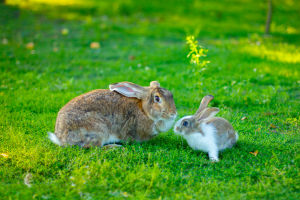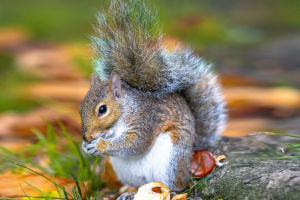Have you ever spotted a white-tailed deer quietly moving through the woods or even near your neighborhood? We invite you to join us as we explore the life of this fascinating animal.
White-tailed deer are more than just beautiful creatures—they are an important part of the natural world many of us share every day. Let's dive into what makes them special and why they are worth our attention.
Who Are White-tailed Deer?
White-tailed deer are one of the smallest deer species in North America. They typically stand about one meter tall at the shoulder and weigh anywhere between 40 to 130 kilograms. One of their most distinctive features is their bright white tail, which they raise high when they run. This signal helps other deer know when danger is near.
Female deer, called does, usually have slender, graceful bodies. They move quickly and quietly, blending well with their surroundings. Their agility is impressive and makes watching them a calming experience for anyone lucky enough to see them.
Behavior and Nature
These deer are naturally shy and cautious. We often notice how even small dogs can scare them away quickly. Their alertness keeps them safe from potential threats. When a deer lies down to rest, it's usually because it's tired from running or keeping watch for danger.
Does have strong endurance but can get exhausted if chased for too long. Seeing a resting deer is a reminder of how much energy these animals use just to stay safe.
Where Do White-tailed Deer Live?
One amazing fact about white-tailed deer is their wide range. From the dense forests of eastern Canada, throughout the eastern United States, down to Florida and even into Mexico and northern parts of South America, these deer are found in many different climates and habitats.
Because they live in so many places, we can see them in various environments—from cold forests to warm lowlands. This adaptability is part of what makes the white-tailed deer so successful.
Why Do White-tailed Deer Matter?
We often forget the important role these deer play in their ecosystems. As herbivores, they help control plant growth by feeding on leaves, twigs, and berries. This keeps the forest balanced and supports other animals too.
Also, deer are a key food source for predators, helping keep nature's balance intact. When we see a healthy deer population, it often means the environment around is doing well too.
How Can We Protect White-tailed Deer?
Because white-tailed deer live close to human areas, they sometimes face risks like habitat loss or road accidents. We can help by respecting their space and supporting efforts to protect forests and natural areas.
When hiking or spending time outdoors, keeping a safe distance and being quiet helps avoid stressing the deer. We all share responsibility to keep these animals safe so future generations can enjoy their presence.
Lessons From Watching Deer
Watching white-tailed deer reminds us to slow down and appreciate the world around us. Their careful movements and alert behavior teach us patience and respect for nature.
Next time you see a white-tailed deer, try to observe quietly and notice its beauty. It's a small moment that connects us with the wild in our daily lives.
Thanks for Exploring With Us!
We hope you enjoyed learning about the white-tailed deer. These elegant animals show us how important it is to live in harmony with nature. If you've ever spotted one or want to share your experience, we'd love to hear from you. Let's keep discovering and protecting the amazing wildlife all around us!


